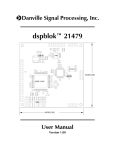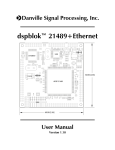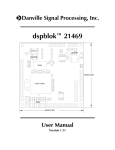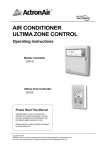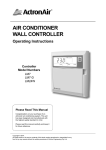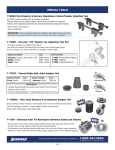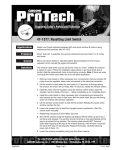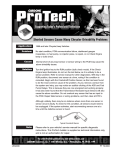Transcript
58-562 and 55-13411 OVERHEATING AFTER WATER PUMP REPLACEMENT Application: Problem: 2003 Chevrolet Express, 2003 GMC Savana with 4.8L, 5.3L or 6.0L Gen III V8 Engine (VIN’s V, T, U – RPO’s LR4, LM7, LQ4) Major engine overheating after replacing water pump. Cause: Because the engine cooling system no longer uses a pressurized coolant surge tank, engine overheating could result if a special bleeding procedure is not performed. After pump replacement or following a condition where the engine coolant has been drained, if engine coolant is only added through the radiator neck and engine coolant overflow reservoir, the engine coolant may not flow beyond the closed thermostat located on the engine at the lower radiator hose connection. Although the engine coolant level may appear full in the radiator neck, the system may be 3.785 to 5.678 liters (4 to 6 quarts) low, and a major engine overheat condition may occur. GM Bulletin No.: 02-06-02-008 Date: September 2002. Solution: Fill procedure (see service manual for detailed steps). CAUTION: Allow engine to cool before opening system. 1. Using a hose clamp tool, reposition upper radiator hose clamp and remove the upper radiator hose. CAUTION: Relieve system pressure before removing hose. 2. Remove the coolant air bleed hose from the radiator. 3. Place a funnel into the upper radiator hose. Important: Use a 50/50 mixture of antifreeze (refer to vehicle service manual for correct coolant) and deionized water. 4. Slowly fill the cooling system through the upper radiator hose with a 50/50 coolant mixture until the coolant comes out the coolant air bleed hose. 5. Connect the upper radiator hose to the radiator. 6. Using the hose clamp tool, position the radiator hose clamp into the original position on the hose. 7. Connect the coolant air bleed hose to the radiator. 8. Fill the radiator with coolant through the filler neck. 9. Install the coolant pressure cap. 10. Fill the coolant overflow bottle to the full line. 11. Start the engine. 12. Run the engine at 2000-2500 RPM until the engine reaches normal operating temperature. 13. Allow the engine to idle for 3 minutes, frequently checking for proper coolant temperature. 14. Shut the engine off. 15. Allow the engine to cool. 16. Top off the coolant as necessary. 17. Inspect the concentration of the engine coolant using a suitable coolant tester. 18. Rinse away any excess coolant from the engine and the engine compartment. 19. Inspect the cooling system for leaks. Note: This PROTECH bulletin is supplied as technical information only and is not an authorization for repair. JD/JE A9238 PT 58-0013
